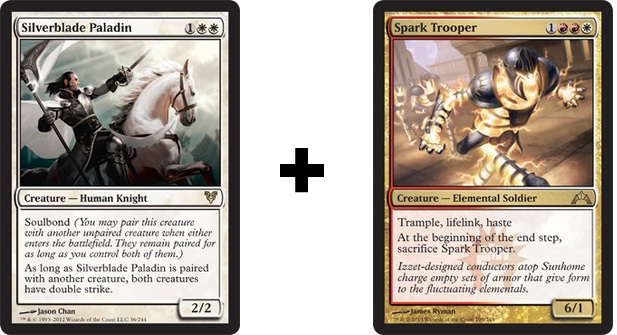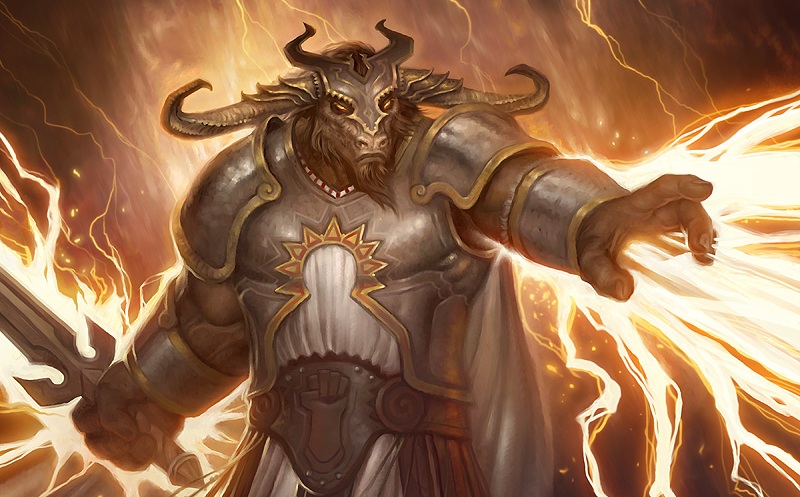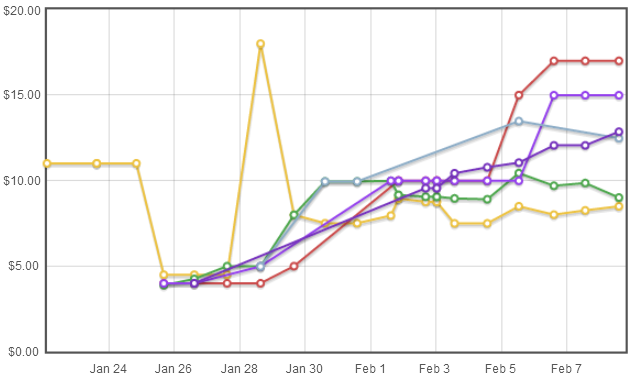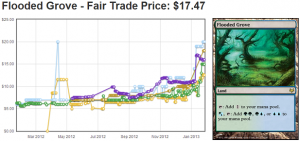Increasing Sales via Inventory Organization

Eric Froehlich’s Naya Zoo deck was composed of 83% rare or mythic cards, making his deck a perfect example of how expensive it is to be a tier 1 competitor. Most of the cards he used are expensive from the perspective of most casual players, but not so expensive that they could not afford a few if they really wanted ‘em. It is certainly obvious that most casual players will not be playing decks composed so expensively as Froehlich’s. Despite this fact, many MTG retailers stock their singles space with mythic and chase rares that sell for at least $10 each. The problem here is that this makes the majority of the inventory held by retailers geared toward a minority of the market; it means that there is just no way that they are all going to sell, and that many cards will be left sitting on shelves not producing profit.
So, the question becomes, “How do magic card retailers gear their inventory toward a larger portion of the market? And how do they clear the inventory of mythic and chase rares that they already have?” By giving the average player a reason to buy expensive cards. Casual players will not be filling their decks with high-priced cards. The only expensive cards that these players will be buying are those which work best with more affordable cards. As you may know, pretty much all of the chase rares work extremely well with less expensive cards. The problem is that not everyone else does, and the solution is proper organization of trade/sell binders. For example, a casual player opening a binder is likely to see the first few pages packed with chase rares that he already knows he cannot afford, and, having no reason to buy, flips right past them without even stopping to give them consideration. On the other hand, the casual player may open a binder and see a combo build with cards that he most certainly can afford or may already have.
Let’s say your customer has some Spark Troopers, Cloudshifts, or Duskmantle Guildmages laying around in his extras not really being used; then, he opens your binder and sees a Thragtusk that he doesn’t want to pay for, but instead of being surrounded by other cards that aren’t in his buy range – it’s sitting there, right next to a card he can afford: Cloudshift. Hell, he probably already has a playset. It’s a simple, game changing combo that just fell into his lap. The Thragtusk will immediately become more appealing to the customer, and every other customer who looks at that Thragtusk and realizes the potential power it has if used with a card they already own. It’s the same concept a car salesmen will use when selling an expensive car; but, instead of just being a car – it’s leather upholstery, tinted windows, and all the things that contribute to the desire and/or impulse of owning such a luxurious object.
The MTG salesmen version of leather upholstery and tinted windows are:
- Thragtusks with a Cloudshift
- Silverblade Paladins with Spark Troopers, or
- Jace, Memory Adept with a Duskmantle Guildmage
In other words – organizing your trade stock in a way that allows customers to realize the potential benefits of chase-rares, in conjunction with easily affordable cards, will increase the appeal of otherwise difficult to sell cards. Instead of letting chase rares sit on shelves, doing nothing other than being drooled at by the occasional customer shuffling by, retailers should be reorganizing their binders and cases in such a fashion that these chase rares become more appealing to customers.
Other good examples of cards that are easily made more appealing are:
- Restoration Angel paired with Acidic Slime
- Deathrite Shaman paired with Grisly Salvage
- Boros Reckoner paired with Pit Fight
- Snapcaster Mage paired with Dissipate/Boros Charm
So, you get it – now go out there – put the rubber to the road and make some extra cash!
This will conclude my third installment, thank you all for reading.
Money Ramp Weekly Tip: [Pick up tons of Sphinx’s Revelations]
Until next time,
Zack R Alvarado
zackalvarado@gmail.com
Twitter: Rh1zzualo




